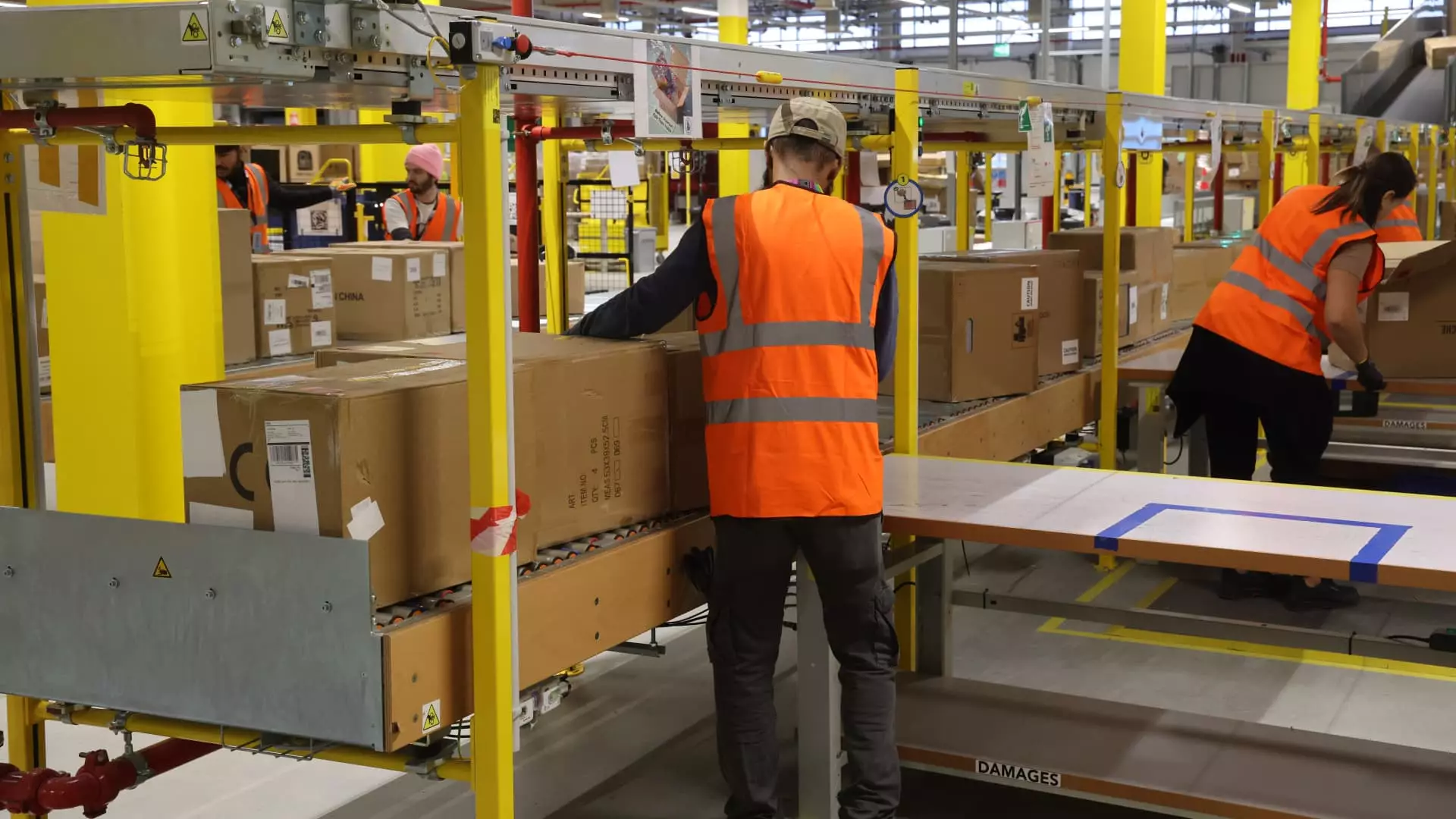In recent years, corporate giants like Amazon have heralded their technological advancements as evidence of innovation and efficiency. The recent announcement of their one millionth robot marks a milestone, yet it also exposes a troubling narrative: the relentless march towards automation is not merely about improving productivity but about eroding the human workforce itself. This apparent leap forward in robotics and artificial intelligence seems to cloak a deeper crisis—one of employment, economic stability, and social cohesion. Far from representing progress, this automation surge signals a dangerous shift toward a future where human labor becomes an expendable relic.
The narrative spun by tech executives portrays robots as collaborative partners rather than competitors. Amazon’s vice president, Scott Dresser, claims that automation frees workers from mundane tasks, fostering the development of technical skills and opening new opportunities. Yet, this optimistic veneer quickly dissolves under closer scrutiny. Genuine job creation in the wake of technological innovation is a myth; history repeatedly shows that efficiency gains often come at the expense of employment. The evidence is compelling: Amazon’s own workforce has seen significant reductions, with thousands of jobs eliminated as robots have taken over functions once performed by humans. While some roles may shift, the overarching trend is clear—automation primarily displaces workers, not enhances their roles.
The Cost of Convenience: Who Really Benefits?
It’s easy to applaud faster deliveries and lowered costs as signs of progress, but such benefits are disproportionately enjoyed by shareholders and corporate executives, with workers bearing the brunt of the fallout. The deployment of over a million robots, coupled with sophisticated AI models like “DeepFleet,” is designed to maximize operational efficiency, but at what cost? The promise of creating new skilled jobs—mentioned by Dresser—is rarely fulfilled in practice. Instead, companies are increasingly siphoning off roles that require human judgment, adaptability, or emotional intelligence, leaving workers in a precarious position.
The transparency of this shift becomes even more apparent when considering Amazon’s own admissions of workforce contraction. Despite launching a new fulfillment center in Louisiana that boasts increased staffing in maintenance and engineering, the company’s overall employment numbers have been shrinking. The contradiction reveals that automation is not a complement to human labor but a replacement—an attempt to cram more productivity out of fewer people. This pattern mirrors broader industry trends, where layoffs are justified as “resizing,” but in reality, they are strategic moves to eliminate costs associated with human workers, often at the expense of quality of work and job security.
The Ethical Dilemma of Automation in a Capitalist Society
This automation obsession exposes a fundamental flaw in our socio-economic priorities. While corporations tout technological innovation as a path to prosperity, the reality for workers is increasingly one of insecurity. The discourse around job displacement tends to be sanitized, framed as a short-term transitional phase. Yet, the truth resonates more loudly: the accelerating deployment of AI and robots signals a systemic shift that dismantles the very foundation of a middle-class economy.
It’s perplexing—and frankly morally questionable—that companies continue to promote automation as an unmitigated good, ignoring the social costs. The threat of mass unemployment looms large, especially for factory workers, who are already deemed most vulnerable by surveys and studies. The labor force, once the backbone of economic growth, is now being sidelined in favor of efficiency metrics. This raises profound questions about corporate responsibility, social justice, and the kind of society we are building. Are we to accept a future where human dignity is traded for shareholder returns, or should we push back and demand that technological progress serve the common good?
A Call for Balance: The Center Ground of Human-Centric Innovation
While some may see the automation wave as inevitable, a nuanced, balanced approach is indispensable. Progress need not mean the extermination of human roles but can instead focus on leveraging AI to augment human potential. Policymakers, business leaders, and society at large must recognize the importance of protecting employment and ensuring that technological advancements are inclusive and equitable.
Investments in education, retraining, and social safety nets are crucial, yet they are often considered after automation has already displaced workers. A more proactive stance is essential—one that emphasizes human-centric innovation, where the goal is collaboration rather than domination. This center ground, advocating for responsible automation, balances technological progress with social responsibility. Only then can we prevent the rise of a future where human labor becomes an afterthought, replaced by cold, unfeeling machinery that profits but impoverishes society at large.


Leave a Reply